Heading out into the wild is exciting, it’s the Huckleberry adventure we all hold dear, add hunting to the equation and that adventure just took an upward spike in adventure credits.
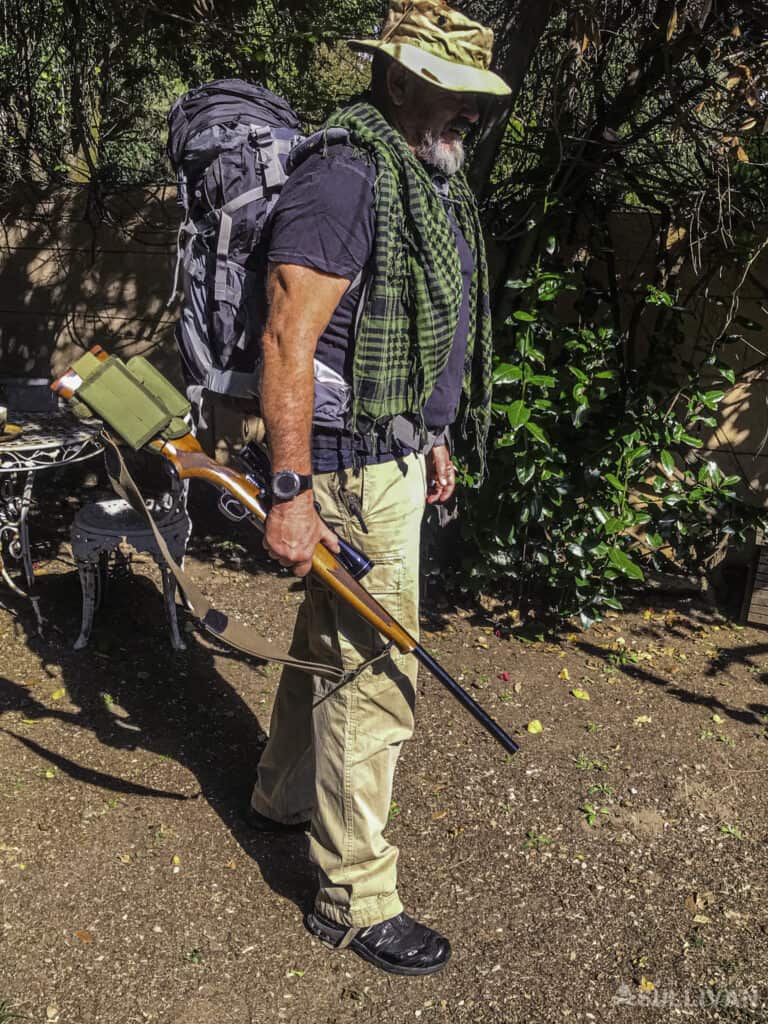
You’re planning a trip into the vastness of America somewhere to roam free and live off the land, harvesting a quarry that will sustain you and your family through the winter months.
Whether as a novice taking your first steps into the world of wilderness or as an experienced hunter, you need to be in shape to cope with the rigors of the wilds.
Whether moving on your own or with hunting partners or perhaps you’re taking your son or daughter out on their first wilderness adventure, it is your responsibility to be in shape.
It’s no-good making plans without taking your physical condition into account, you need to be able to take care of yourself and anyone that you take with you.
Your hunting partner may get into trouble, fall and twist an ankle, or break it.
The health benefits of staying in shape and fit are well documented, and make no mistake you’ll need that physical wellness if you are out in the wilds hunting or find yourself in a survival situation.
Field fit is not just physical conditioning. It’s field preparedness, the right gear, enough water and food, and the best possible kit and apparel, that best suit the purpose of hunting in the wilds.
Hunting fitness is different to track fitness or even road running as you have to engage your mental faculties at a much higher level, and awareness must be sharp.
As a hunter, you will need to observe your surroundings, take in the information, and maintain awareness. For that, you must be able to scan and observe.
If you are fatigued, in general, you will be looking down and willing yourself on, this is trudging.
If you’re in a hurry and not careful, you’ll lumber through the bush, crashing through low tree branches and underbrush.
I have personally lumbered with speed when I bumped into a very angry African Buffalo bull. He was old and wise and didn’t get that way by accident.
I had to move with speed and get myself up a large tree to avoid this angry old bull.
If hadn’t been in good physical condition I wouldn’t have been able to move as quickly as I did.
I also wouldn’t have been able to engage in critical thinking and make split-second decisions concerning my immediate survival.
Table of Contents
The Demands of The Hunt – Body and Mind
You will be moving through uneven terrain, over rough ground dense bush and forest, sandy and sometimes muddy environments.
The thrill of the chase and the rush of the hunt can soon dim if you are not able to get back home and get out of the terrain you have taken yourself into.
Hunting, hiking, and adventure racing have inherent risks due to the demands it puts on you physically and mentally.
Fitness prevents injury, the more supple and flexible, and stronger you are, the less likely you are to injure yourself while putting your body under physical endurance pressure.
That will entail walking, running, and generally moving in wilderness areas, carrying a pack on your back with all your equipment necessary for your adventure.
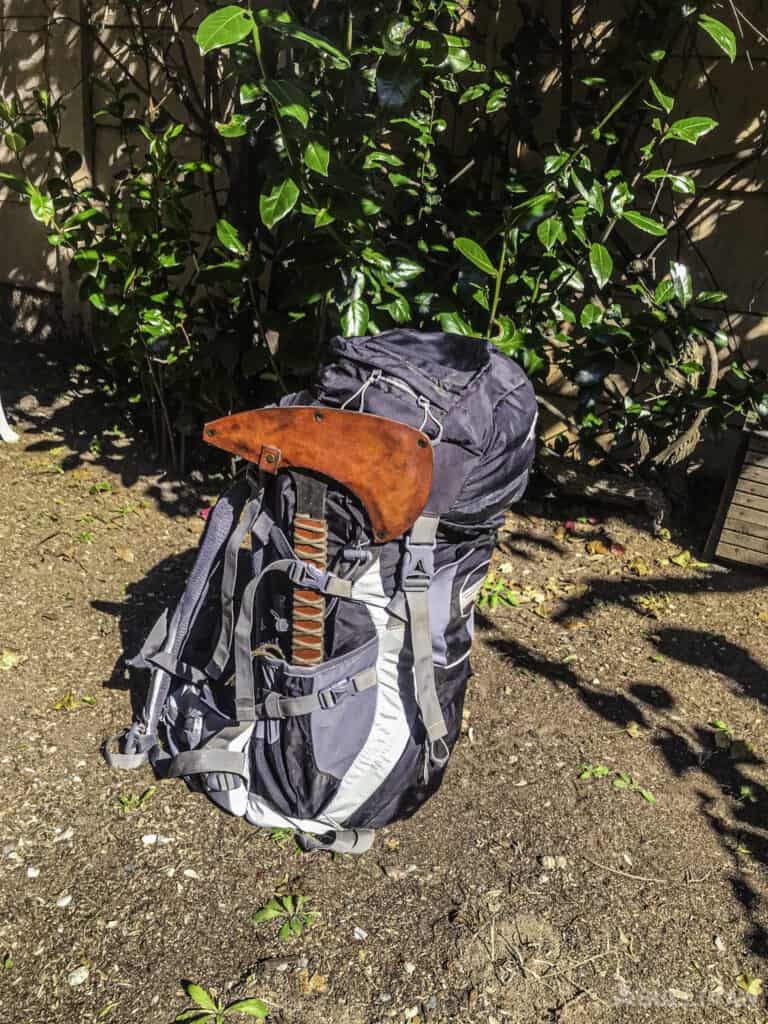
As a hunter you will be carrying your gear, this load will place demands on your hips, knees, and ankles which all focus on your feet.
Not only will you be carrying weight, but you will carry your load over a distance.
Walking distances can vary as much as the topography, both of which will be demanding on your body’s readiness.
You can cover anywhere from 3 to 4 miles walking into an area, covering forests and grasslands to mountains, rivers, and trails.
In real terms, you can cover 6 to 10 miles in a day carrying a load that is 10% – 25% of your body weight.
Making a stealthy approach can require you to crawl through the underbrush to remain unobserved.
It can require your approach to be over rough ground, this will be physically demanding and can add mental strain to the excitement of the hunt.
Any hunting expedition can encounter a mishap, disaster comes in many forms, from room fires, car accidents, and flooding, to being trapped in the cold or the heat, without the possibility of immediate rescue, you are in a survival situation. It really is that simple.
Physical fitness is directly related to mental health, the sense of accomplishment that you feel in conquering small fitness challenges directly translates into mental strength, self-confidence, and physical vigor.
Aggravating Factors
Any disaster situation is aggravated by a lack of the survival basics:
- Shelter
- Water
- Food
Your physical conditioning will strongly influence how your body copes with the lack of water, exposure, and lack of food.
The fitter you are the easier it is to cope, the correlation between these two factors is not only well documented but actively promoted.
Fear is your enemy; it demotivates and freezes your reaction time.
Physical fitness enables mental fitness, your confidence in your ability to save yourself will override your fears, fitness is an enabler.
How Fit are You?
So how fit are you? Determining fitness has a baseline measure depends on your age. The heart is the blood pump, it’s your get up and go machine.
A fit heart pumps blood more efficiently and slowly around the body.
High blood pressure is associated with a widening waistline, it is what it is, your heart is working harder to get the blood to move around the body.
Exercise is one of the best ways to lower your blood pressure, manage your health and your everyday stress.
So how fit are you? There is a direct relationship between age and heart health, younger heart is naturally fitter than older ones, but it is never too late to be a fitter you.
Measuring your heart rate requires a resting rate, best measured early in the morning, this is called the base rate and then measured again after an exercise workout.
The fitness measurement is derived from the time it takes for the heart rate to return to your base rate.
This base line chart for both men and women will give you a starting point:
| Age | 18 – 25 | 26 – 35 | 36 – 45 | 46 – 55 | 56 – 65 | 66 + |
|---|---|---|---|---|---|---|
| Athlete | 40 – 52 | 44 – 50 | 47 – 53 | 49 – 54 | 51 – 56 | 52 – 55 |
| Excellent | 56 – 61 | 55 – 61 | 57 – 62 | 58 – 63 | 57 – 61 | 56 – 61 |
| Good | 62 – 65 | 62 – 65 | 63 – 66 | 64 – 67 | 62 -67 | 62 – 65 |
| Above Average | 66 – 69 | 66 – 70 | 67 – 70 | 68 – 71 | 68 – 71 | 66 – 69 |
| Average | 70 – 73 | 71 – 74 | 71 – 75 | 72 – 76 | 72 – 75 | 70 -73 |
| Below Average | 74 – 81 | 75 – 81 | 76 -82 | 77 – 83 | 76 – 81 | 74 – 79 |
| Poor | 82+ | 82+ | 83+ | 84+ | 82+ | 80+ |
These values are only a guide, don’t fixate on your heart rate, but rather focus on getting moving. They also do not replace the advice of your health care professional.
Your target heart rate is the range heart should be working in when exercising, this is the maximum you should push yourself too, safely. The rule of thumb is 220 less your age.
Before rushing off and over-exercising you must see your doctor and get a checkup to determine where you are right now and get some assistance on your exercise journey.
John Hopkins has a useful application that will give you a great guide to target heart rate and recommendations on starting out no matter your fitness level.
It’s also important to know your limits. Yes, it is vital to push the envelope in certain circumstances, and in a survival situation, you’ll have no choice.
Right now, in the building phase or exercise development phase, you need to take it a step at a time. Push yourself slowly!
Setting Achievable Goals
In the military, we had a training philosophy, “Train Like You Fight and Fight Like You Train.” Fitness regimes will follow the same guideline.
If you train and shape your exercise program to mimic the types of physical stress you will have to cope with when in the field, your body will adjust, and any situation will be manageable and well within your coping spectrum.
Pro Tip: Challenge yourself before you even start exercising, by drinking eight large glasses of water over the course of the day, two with every meal, one before and one after, keep a log and tick the boxes.
Go for a Health Check
Seeing Your Doctor Is the First Step
If you are on chronic medication or have any underlying issues your doctor will advise you on the course of action you need to follow.
Getting back in shape is a process and managing the process is a commitment.
Explain what your goals are and what you wish to achieve so that your doctor will give you a full breakdown of the implications and the necessary steps you will need to take to meet your expectations.
Your doctor will also run some tests to check out your blood pressure, and help you determine the form your building phase needs to take.
Your Chassis Will Also Need To Be Checked Out
Mobility is vital to hunting and a good once over will determine what, if anything is in need of maintenance your doctor will be able to advise on the best way to exercise and support any issues that may arise from the checkup.
Even if no issues are found, your doctor will advise on the best course of exercise to make sure you don’t develop any issues later.
This will determine your dietary requirements, and what you should do to manage your weight. Later on, we will look at diet in the field for a broad overview of what you’ll need.
See Your Dentist!
What’s a dentist got to do with survival and fitness?
Remember toothache, well when you are in the deep end there is every chance you will not be anywhere near one. It’s a typical scenario, there’s never one when you need one.
Choosing Your Gear
Look After Your Feet
Footwear is vital, your feet then your legs. Think of your legs like needles that need thimbles; those thimbles are your feet.
Your entire body weight is focused on your two soles, they are the only ones you got.
Pop in at the local sports shop, runner’s emporium, or a decent shoemaker, and get your feet measured, they are not the same size.
Most people do not buy the right footwear for the intended purpose, they don’t buy the right size.
In general, for outdoor purposes, you want to use a material that is lightweight and waterproof.
You need to keep your feet dry, material that wicks away sweat is ideal, modern materials have improved the way we can get rid of sweat, efficiently keeping you dry and cool.
Leather is great for boots; it is an age-old material and has a heritage as long as humans have walked the earth.
Boots, in my opinion, need to be at a minimum ankle length to provide the best support, especially when you are “load-bearing”.
Socks are important, they help keep the feet dry, they keep your shoes dry, and ensure that sweat and bacteria don’t build up in your shoes.
They help prevent athletes’ foot fungal problems and bad odors.
Well-fitting socks prevent blisters by not bunching in your boot, they redistribute friction which causes skin blisters from rubbing by keeping your feet dry.
Blisters are the bane of any hunter hiking out into the wilderness, that’s why good footwear is important. That said, blisters can develop.
The more you train in the gear you will be wearing, the better it will fit, and you will know what works and what doesn’t.
Wet feet will cause trench foot, blisters and aggravate the skin causing tears and/or deep cracks. Try to go barefoot as much as possible, let those feet breathe.
If you do develop a blister, keep the pressure off it, a small piece of round moleskin, (cut the corners off a square to prevent it from snagging in your socks), cover the blister to prevent further contact, and tape around the blister with a waterproof medical adhesive wrap or duct tape.
Pro Tip: Use talcum powder in your socks to help manage sweat and foot odors. There are also a number of anti-fungal foot powers on the market.
Apparel
The weather dictates what you wear. In the tropics, you dress for the heat mixed with the humidity, in hot climates protection from the sun and the heat, and then there is the cold and wet.
I have been in the mountains, setting out on a warm sunny day, making the crescent, only to have the weather turn on a dime and catch me in a down pour.
Remember layers. layers will keep body heat in and can be removed if you need to drop your body temperature.
Shirts can also be made from water-wicking materials, that help removes the sweat from your body, promoting cooling and also promoting body heat if you are sweating in the cold.
Sweat can quickly cool your body down. Wool is still an awesome fabric to wear in cooler and cold conditions.
Pants work the same way, protecting you from the harsh sun or cold, and serve as a layer of protection from thorns, insects, and general abrasion. Wear clean underwear, not tight-fitting gear either.
Pro Tip: Wear lycra shorts as underwear to prevent chaffing.
Keep Dry it’s an absolute necessity. Chose lightweight portable rain gear, make sure it fits over your clothes and is not too tight or you will sweat especially if you are on the move.
Backpacks
Picking a backpack is a personal choice, your body shape, tall, short, medium, thin, muscular, or chunky will all determine you’re the kind of backpack you should choose.
Measuring up for a back follows the upside-down T. Looking down, the prominent vertebra is normally C7, and the top of your backpack rides here.
The bottom of the T crosses over and just above the hips, The backpack hip belt goes here. Adjust your backpack to fit to maximize the hip loadbearing capacity.
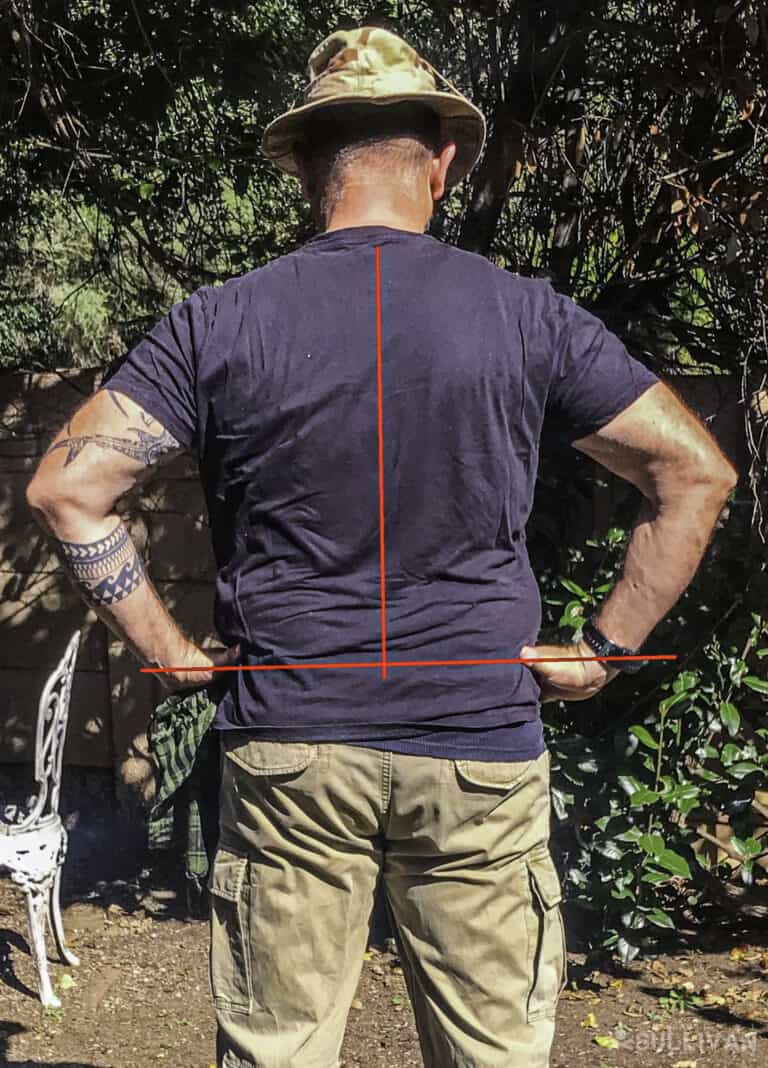
Next in line is what will you use it for, days in the field, the amount of kit you will carry, and of course the weather.
Don’t pack a day ruck when circumstances dictate, you’ll be in the field for more than a day, you may encounter bad weather, or you have to traverse difficult topography.
Comfort is the overriding concern. Shoulder straps are comfort-based, heavyweight affects the straps, and can fold in on themselves if not well-formed.
They can dig into your shoulders and then pain takes away from your pleasure.
Hip belts are necessary to help with the weight distribution. Picking and fitting a backpack is critical, especially if you are intending on doing a long trip.
Loading your pack is equally important, the general rule is heavy on top light at the bottom, especially for external framed backpacks.
For internal backpacks light at the bottom and heavy as close to your back, in the mid and upper part of your backpack, with your needed items right on top.
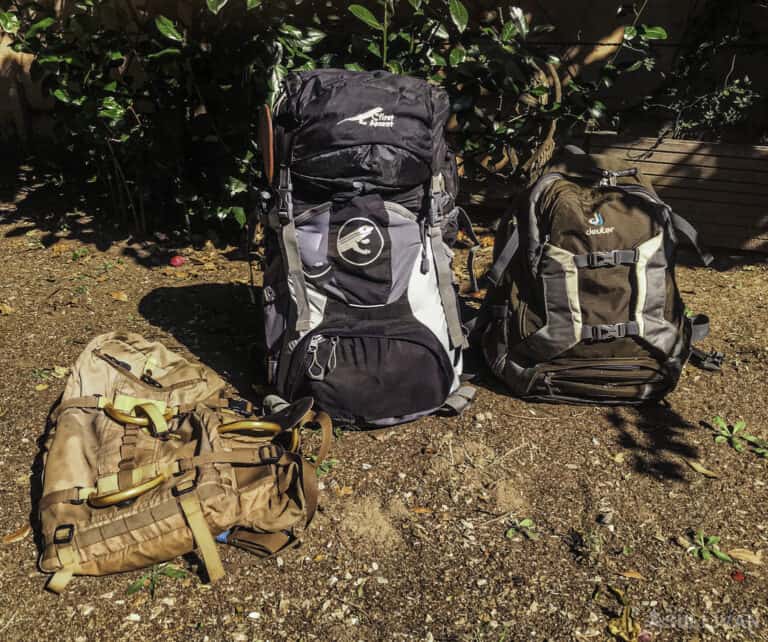
There is a lot to say about loading and trekking, but you need to start light and build up your load-bearing capacity as your fitness increases.
Your backpack shouldn’t exceed 25% of your body weight, I don’t think the military believed in this rule, but this is a good formula to base your limits on.
Start at 5% of the 25% factor (that’s one-fifth of the weight), and as you become more comfortable increase in 2% increments as you increase the distances you walk during training.
Pro Tip: When moving with a large backpack, have a small frameless day pack folded away, for shorter excursions into the field from your basecamp.
Planning
Fitness is a long-term endeavor, first getting fit and then maintaining your levels. This will require a plan. The best way to stay on track, so to speak, is to create a training schedule, this will keep you honest and motivated.
Break it down into manageable chunks, 12 weeks at a time. Take a progress picture once a week, and weigh yourself only once a week.
You don’t need a gym membership! Everything you need you already have; your body is your temple and your workout machine.
You want to be ready for the next hunting season or a hike with friends, this is your goal and you can devise your strategy around it.
Harrison Caine is ready to go hunting, with his backpack, hunting rifle, bandana and hat.jpg
For example, my brothers planned a trip to Mount Kilimanjaro in Kenya to celebrate life – what better reason can there be?
They designed a training strategy to get themselves in shape to cope with the rigors of the climb and the altitude.
An activity log must include planning for your trip, setting yourself a goal, and working out your needs. Ask hunting partners or hiking buddies for advice on what to take and start working out.
Hunting means you will carry a rifle and possibly a sidearm, your training should include at least a length of pipe if you’re in an urban area, similar in size and weight to the rifle you will be carrying.
Keep it as real as possible so if you are on your own property or in a position to train with permission in a wilderness area, take your rifle, it’s a weight you’ll need to get used to carrying.
Stretching and Activating Your Body
Stretching is probably the most underrated form of physical exercise. Physical prowess is mostly associated with muscle, but the tendons and ligaments are the foundation of strength.
If you have ever pulled a muscle, it is probably a tendon, think hamstrings and groin strain.
Let’s Look at the muscle groups that will be activated. The upper body will be carrying your supplies so look after it.
There are volumes on this subject yet body mechanics are just that, and like a good engine, everything works better when warmed up. The five basic upper body stretches are:
- Torso Stretch
- Chest, Shoulders and Biceps
- Back Stretch
- Upper Back and Shoulder Stretch
- Triceps Stretch
Your legs are your chassis, they carry you, take you where you need to be, and get you out of trouble. They need to be strong and supple, stretching them helps to build strong tendons.
Remember when I said hamstring and groin strain, stretching can protect you from injury? Regular, as in every day will help you stay flexible.
The four basic lower body stretches are:
- Standing Touch Your Toes
- Step Heal Down Calf Stretch
- Hamstring Cross Overs
- Butterfly Groin Stretch
Aerobic Training
Aerobic exercises target cardiovascular fitness. You’re training for hunting and hiking or trekking in rough to hostile environments, and for this, you will need endurance.
To prepare for that you’ll be walking, jogging, and jumping rope, be aware that these will impact your lower joints, hips, knees, and ankles, so pace yourself.
Stair climbing is easier on your joints and builds muscle pretty fast while conditioning you for the uphills that you will encounter.
Swimming and cycling have the least impact on your joints while building stamina and endurance.
The best is a combination of these exercises, which will it different smaller muscles, these are your supporting muscles for your bigger guns, don’t neglect your support system.
Anaerobic Training
Anaerobic exercises are the ones that build muscle. Remember you will be carrying your kit over long distances, and probably hauling meat or timber back to camp. Endurance is important, but it must be combined with strength.
The most obvious strength-building exercise is weight training, but this isn’t necessarily your first port of call. Your strength goals need to start small; I cannot stress this enough.
Your goal is to grow, if you push yourself too hard in the beginning you will break down.
Weight training is the fastest way to tighten up muscle, and build on a solid foundation but must be handled with care.
Whether you are an old hand at the weight training or not, don’t let your haste or ego cause you injury that will burn down your gains. It is very easy to become overzealous and strain something.
Focus on bodyweight exercises in the beginning, and remain consistent. Consistency is the key, daily gains will add up to real change.
The Big Three Exercises are:
- Push-Ups
- Squats
- Planks
Lower body muscle gains from only bodyweight training will limit your development so combining bodyweight training with a weight workout regime will yield better benefits.
Compound Training
Aerobic and anaerobic exercises need to be mixed, you can do this on a daily basis 24/7 365 because you are alive 24/7 365.
Mix it up, vary your needs, and if you feel you must take a day off, do it guilt-free.
Remember balance, balance in all things. I train twice a day every day in one form or another, it’s not what you have to do, it’s only to illustrate what can be done.
Take time for yourself and your family, survival is about taking your time.
Time Taken is Fitness Gained
Warming up and cooling down is an imperative part of training, we covered stretching earlier, so use your stretching to warm up and get that blood flowing and stretch to cool down, to help lower your heart rate and keep your metabolism elevated.
Starting out, keep it to a light walk or stroll of 20 minutes at least 3 times a week, and combine a few push-ups, squats, and planks along the way, this will get your program mixing anaerobic and aerobic exercise without overwhelming you.
Three weeks will get your body acclimatized to the new exercise regime.
You can begin to amp it up by starting out with a lightly loaded day pack or your backpack and extending your walk and adding an extra day a week to your workout.
Using this methodology keep adding a little at a time over the next 8 weeks till you have worked up to the distances your hunt planning has scheduled.
Stay the course, you started with a purpose, to meet your fitness requirement for a hunting expedition. Now that you have achieved your goal, maintain your fitness levels and build on them.
Eating Well
Part of getting fit is eating well and I don’t mean the all-you-can-eat buffet down the road, remember balance is vital to good performance.
I once guided a hunter that was over 300 pounds. He was a very big man, with a huge appetite, and absolutely unable to walk and hunt on foot.
I eventually relented and drove him closer to a herd of impala, and lead him the few meters he could manage to some cover to take a shot.
He was so out of breath that he had to take 15 minutes to recover enough to take the shot, and missed.
It is a pity as he was keen on the hunt but unable to cope with the rigors of the bush and the physical demands of hunting in the field.
The military has a different view on nutrition, they feed you 2000 calories, and take back 3000 calories in sweat.
This is not what you want, right now, but a demanding day in the field can chew up as many or more depending on the weather.
You won’t train your body to understand what is happening to it and not freak out thinking it’s being punished and so store every calorie in fright, not knowing where the next meal will come from.
Your body will adapt quickly and will utilize every calorie in the fight to keep you fully charged to take on the demands of a hunting expedition.
Protein
Protein is the building block of muscle; your protein intake needs to exceed your protein burn.
But what the hell does that mean? I hear you, but it’s not complicated. When you train you actually tear muscle fibers; they are called micro-tears.
Muscle is made up of protein and needs protein to repair itself and grow bigger and stronger.
Those repaired muscles are the growth point. In order to maintain and gain muscle mass, you need to eat more protein than you use up.
It is important to know how much your body works, when you are out in the field, you will have to carry all you need to maintain your body in prime condition.
Hunting is about precision, and making solid choices, if you are fatigued or just burned out it will affect performance and accuracy.
The short math here is 0.35 per pound of body weight to maintain muscle mass, and general health.
A man of 165 pounds will need 60 grams of protein per day, 4 calories per gram, that’s 240 calories in protein.
I burn around 300 to 500 calories in a workout, that’s 600 to 1000 calories a day.
At 220 pounds I need 77 grams of protein for maintenance, so I have to eat more to have a positive protein balance or less if I want to lose weight.
That will equate to an extra 150 grams of protein to remain positive.
In general, we get proteins from meats, dairy, and vegetables.
What you need to know is that your food is made up of a combination of protein AND carbohydrates, which means more calories, so you’ll have to balance your intake by following a quick reference chart.
I know it sounds like work, but you’ll soon get the hang of it and not need the chart to guide you.
If you make the shot, you’ll have enough protein so what actually fuels the machine?
Carbohydrates
Carbohydrates are the fuel that your muscles burn. Sugars and starches make up carbohydrates.
There are good carbs and bad carbs: high fiber carbs that digest slowly, and low fiber carbs that digest quickly.
This muscle fuel is called glycogen and is stored in our muscles and liver, too much sugar and we store it as fat.
This means you are not burning enough fuel, and your body ends up storing it around your butt and gut.
That doesn’t mean this extra weight is good for you, too much storage lead to obesity and numerous health problems.
Remember balance, is in everything you do and that includes the food you eat.
Following a balanced diet, doesn’t mean don’t eat chocolate, it means don’t eat the whole box, too much of a good thing, in this case, will be bad for you.
Fats
Don’t fear fats either, just make the right choice between the good fats and the bad fats.
There are healthy fats that will digest slower, keep you fuller for longer, and provide sustained energy for a longer time.
Think naturally occurring fats in foods like animal meat, dairy, avocado, and nuts.
Bad fats raise your cholesterol and are medically proven to spike your insulin, raising the risk of heart disease and diabetes, think deep-fried and man-made fats like margarine and modified oils.
A good reference chart will help guide your dietary choices.
Fitness = Exercise x Food
Fitness is not just running far or pushing heavyweights, it is about knowing how to fuel your body.
This knowledge will guide you as you prepare for the hunt and if you are caught up in a survival situation or SHTF scenario, you now know how to feed yourself to maximize your chances of survival.
It’s not enough to just have a chart you have to use it, mixing up your intake in order to maximize the efficiency of your fuel must have a plan.
In the military we talk about three squares a day, that is a minimum standard that is good to follow.
You will need to work out what suits your current lifestyle, and what suits you personally. Dietary plans are not a one-size-fits-all, you need to mix it up and tailor it to your needs.
When in the field, the plans that you used during training will have given you an understanding of what your body needs and how to pack for your trip into the wilderness.
Follow your plan to maximize your fitness goals, there is a lot of literature out there on the subject and it can be confusing as every new guru fights for relevance.
The simple solution is to drink lots of water, eat regularly, and train.
The science here is agreed on a few points though, eat first to fuel the machine, eat as soon as you can after heavy exertion, drink the water often and eat fresh, and stay away from too much junk.
Discipline yourself, the same discipline you use to stick to your exercise and eating will translate into decisive action in the field when hunting.
Key Points
The great outdoors and in particular hunting will require you to be physically fit, I know it sounds obvious but you’ll be surprised at how much this aspect of the hunt is overlooked.
You will be on your feet for the better part of a day either walking and using stealth to approach your target or walking into the hide or tree stand that you will use to hunt from. Either way, you will definitely be putting miles on your boots.
Humping into the main campsite you will be operating from will entail carrying your supplies and equipment.
So added to the endurance aspect of walking, you will need the strength to lift, bear the weight of your, and hump it in.
Mountain lions, bears, and wolves are all opportunists and may confront you in the field, either by just bumping into one another or in actual conflict over your quarry.
Either way, discretion is the better part of valor, and you should back off as quickly and quietly as you can.
Here fitness plays its role in extricating you from a possibly dangerous situation.
If you are unfit, you make more noise, you will either “trudge or lumber”, these two words denote a lack of care in movement.
To be stealthy takes management of movement, place your feet carefully to miss loose twigs, leaves, and gravel.
Physical fitness absolutely frees your brain, it won’t allow fatigue to blunt your edge and dim your decision-making capacity.
This translates into a successful hunt when you need a calm mind to stay on your quarry, and a calm mind to make critical decisions on tracking, stealth, and cover utilization.
You will need to be steady on the rifle or bow, even a spear if you want to be effective and accurate.
If you’re panting and cannot steady your heart rate, your sight picture will be bouncing around as your chest heaves trying to fill your lungs.
Fitness allows you a far quicker physical recovery, reducing frustration and increasing your success rate.
On any hunt you are vulnerable to injury, either yourself or your hunting partner, you need to be in shape to cope with these scenarios.
You may have to get yourself out of a hole in the ground or carry your partner to safety and medical attention. Strength and endurance are your goals as an ethical hunter.
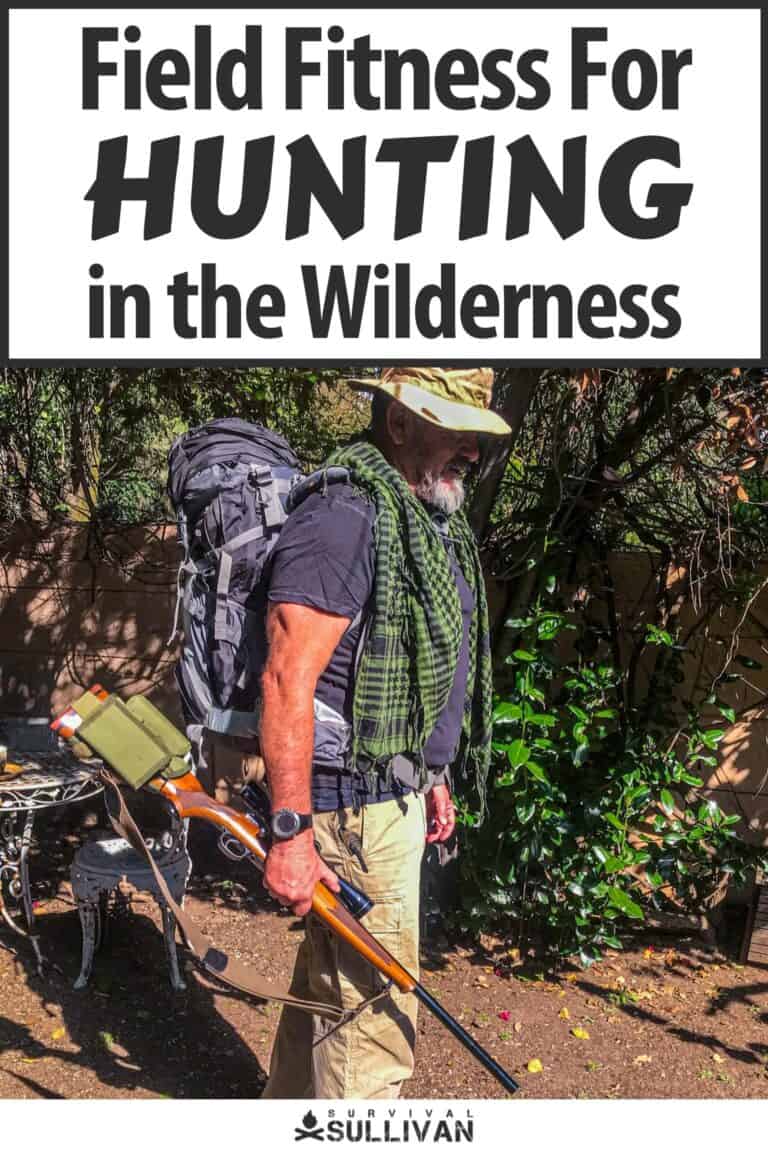

Harrison Caine is a soldier, a hunter, a trained expert in hand-to-hand combat, hunting. He’s trained soldiers, fought wars, and provided defense services to refugees and U.S. officials. His experience in tough wilderness scenarios is unmatched
